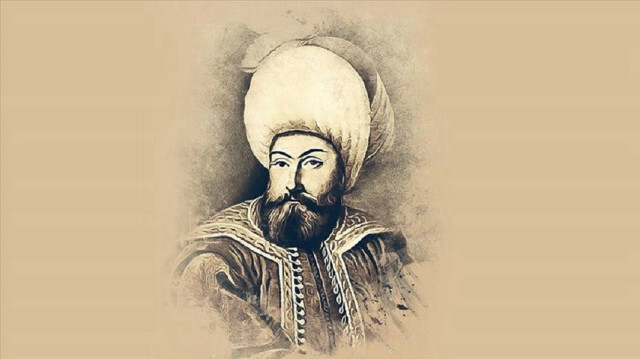
Osman I almost doubled size of Ottoman realm before his death in 1326
Monday marks the 696th anniversary of the death of Osman Ghazi, the founder and first sultan of the Ottoman Empire, which would eventually grow into a vast and influential world power.
Osman I, also known as Osman Ghazi, was the leader of the Kayi tribe and the founder and first sultan of the Ottoman dynasty, which would expand and rise to later become the Ottoman Empire.
Founded in 1299 by Muslim Oghuz Turks in the present-day Sogut district of Türkiye’s western Bilecik province by Osman Ghazi (the warrior), the Ottoman Empire gradually became a world power spanning Africa, Asia, and Europe, lasting over 600 years, and wielded influence over the Middle East, Balkans, and the world.
Osman was a nominal vessel to the Seljuks – ruled from their capital city of Konya in central modern-day Türkiye – until he declared his independence and started taking over Byzantine land in 1299 following the disintegration of the Seljuk dynasty.
Osman I, descendant of the Kayi tribe, established a small beylik or principality and formed a new order in the region. The word Ottoman is derived from Osman's name.
- Historical background
Muslim Oghuz Turks migrating from Central Asia established the Seljuq dynasty, known as the Great Seljuk Empire, which included modern-day Mesopotamia, Syria, Palestine, and Iran in the mid-11th century. In the 1071 Battle of Manzikert, Seljuq Turks defeat a Byzantine army and opened up Anatolia for Turkish domination.
By the early 12th century, Turkish tribes spread to all parts of the Anatolia on both the north-south and east-west axes. Even the Crusades, between 1095 and 1291, and Mongol invasions in the 13th century could not displace Turks from their new homeland, Anatolia.
Following the Mongol defeat of the Seljuqs in 1293, Seljuq territories quickly divided into small beyleks or principalities, which were separately led by various tribes, including the Kayi.
Taking advantage of the disintegration of the Seljuq dynasty, Osman I quickly expanded his territory through Anatolia as a chief rival to the Byzantine Empire.
- Chronology
Born in 1258 in Sogut, Osman was the son of Ertugrul, a chieftain from the Kayi tribe under the command of the Seljuks, and grandson of Suleyman Shah, both of whom were from the Kayi tribe of Oghuz Turks.
After the death of his father Ertugrul in 1280, Osman inherited his position as a chief or bey, and formed his forces and began marching towards small settlements in Byzantine territory.
In 1298, Osman took control of Bilecik and Yarhisar in modern-day western Türkiye and transferred the center of the principality into Bilecik.
Next, in 1299, he gained control of Inegol and delivered a sermon in his name in Karacahisar. This was accepted as the date the Ottoman Empire was founded.
Osman started the siege of Iznik (also known as Nicaea) in 1301 and the siege of Bursa in 1302. Iznik, fortified with a city wall, and protected by a large garrison as an important administrative hub and former Byzantine capital, was conquered in 1330.
Due to illness, he handed over the leadership of the principality to his son Orhan Bey in 1324. Osman I died just before the capture of Bursa in 1326, whose siege lasted 24 years.
By the end of his reign, Osman had almost doubled the size of the Ottoman realm. His last wish as a ruler was to take over the city of Bursa.
Osman Bey’s body was buried in Sogut and was reinterred in Bursa in 1326 in line with his will.
The father of seven sons, Osman was married twice in his life. His son Orhan Ghazi succeed Osman Bey, who captured additional significant cities in present-day northwest Türkiye.

